|
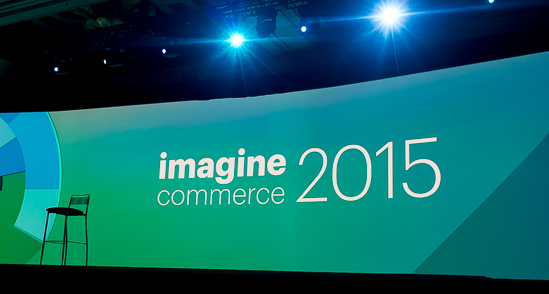
As you may know, I went out to Las Vegas for the Magento Imagine show in April, to find out the new trends in eCommerce, and get an overview for what’s going on within the Magento company and in the industry in general.
I’ve let me thoughts simmer and marinate for a bit now, and want to share with you my thoughts and experiences from the show
As usual, I brought some of my camera gear with me, too, so that I could visually remember what I say.
The Imagine conference started off with amazing music:

Magento Imagine – 2015 Recap
First, the continuing trends:
- This year, mobile, responsive design is still very, very important and top of mind. This has been a trend for the past few years. But responsive design has now become a "must have" for any new site build.
- Second, speed is king. You’ve got to have a fast loading site. Some of the speakers were talking about how critical site speed is for SEO and sales conversion.
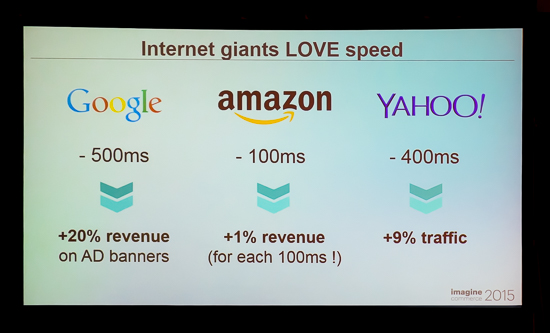
According to the presenter, site speed directly turns into revenue:
- For Google, a 1/2 second page speed improvement (500 ms) means 20% more revenue from Ad banners.
- For Amazon, shaving 1/10 of a second from a page load increases revenue by 1%. If Amazon shaves a full second off of a page, that translates into a 10% increase in revenue.
- Yahoo’s statistics show that a 4/10 of a second decrease in page load speed increases their site traffic by 9%.
Milliseconds matter! In addition to direct revenue correlations, the big sites see an increase in user experience, better handling of the server during peak hours, better search engine optimization ranking, and a better-perceived brand image:
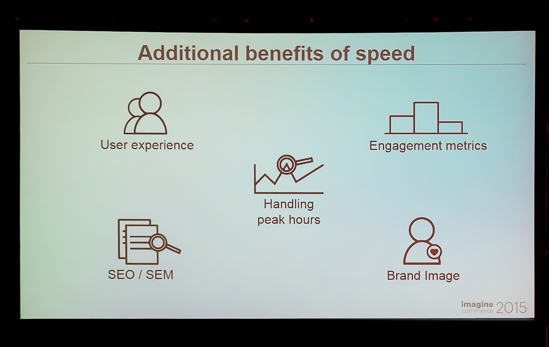
But these trends were also talked about last year, and just part of the "must have" to have a real store on the Web
This was also the first year that Roy Rubin, the founder of the Magento, was not at the conference.
For me, it was a bittersweet conference, as Roy Rubin has been the "soul" of Magento, even though it was sold to eBay and brought under their umbrella of an organization.
My takeway on the real trends:
- First, Amazon is still the big market leader, and handles shipping and fulfilment extremely well. They currently have about 2% marketshare of all US Retail (not just online).
- Second, customers want real content that speaks to them. They want to understand the ethos of the product they are buying. Cool new features are important, but so is the history of the people making it, and the reason why the product was created in the first place.
- Third, customers increasingly want a company to talk to them and interact regardless of platform. End customers don’t see a difference between mobile, in-store, desktop, etc. But as most people in business know, this is an extremely difficult and complex thing to do. Some big brands do this really well. Most companies don’t.
- Fourth, I saw a much bigger focus being placed on back-office systems like inventory management, fulfillment, merchandising. The good news – we’ve done a lot of complex integrations and warehouse management in the past.
- Fifth, growth in the eCommerce space is still increasing at a steady rate, but is expected to start to flatten out slightly by 2019 or 2020.
Magento’s management is playing offense:
This is the year when (I think) Magento’s management is coming out swinging and is aggressive. They are excited to be unshackled from the grip of their parent, eBay, and act more nimbly as a company.
They seem committed to plugging forward on Magento 2.0, while keeping the 1.x platform up to date. (We keep getting questions from customers to see if they want to wait for the Magento 2.0 platform or start on the 1.x platform.)
There’s new focus on small business sites, which I feel are the core of Magento, and the reason why Magento is so successful
In my opinion, Magento’s success was not based on the Enterprise platform that is used by a few thousand merchants, but from the hundreds of thousands of Community storefronts that created a crazy ecosystem of developers (like Customer Paradigm) to help tailor and customize the Magento platform into the scalable, feature-rich system it is today.
eBay purchased the Magento platform to make sure that PayPal would remain tightly integrated, as they wanted to make sure that the dominant eCommerce system would have PayPal built in. This has been a very succesful strategy.
But the challenge is that Magento makes most of its income from licensing revenue from the Enterprise edition. And inside Magento (vs. the bigger eBay organization), Magento Enterprise sites are really what matter and carry weight. Not so much with Community sites. At least that’s my perception… So I think we’ll have to see how important this remains to the organization as it goes forward.
There’s also emphasis on getting the bigger and bigger eCommerce clients, because they can demonstrate that Magento can perform at scale
The good news: Magento is the #1 eCommerce solution in the marketplace. Nothing else comes close, and it’s dominating the space.
Slightly scaled back conference:
The conference was scaled back slightly in some ways.
It was still amazing, but a lot less extravagant than in years past.
To me, it seems like there’s a bit more financial restraint on how much they spent.
And honestly, that’s a good thing, I think. In the past, it was crazy how much was spent on pretty useless stuff. This year was a solid conference, but didn’t have the crazy baubles and performers like last year
Given that Magento did a small round of layoffs last year, this is probably appropriate.
They still did have a bean bag toss into the pool:

Here’s another shot from the first night party:

And they had great entertainers helping kick off the event
This guy is actually a Magento employee, though:


Introduction by Craig Hayman, President eBay Enterprise:
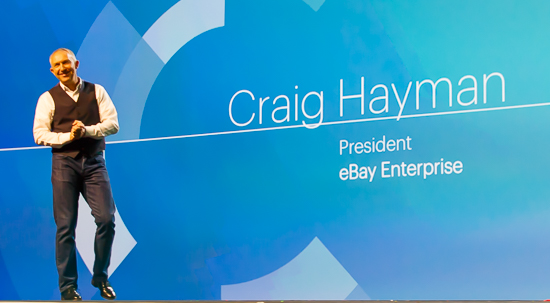
Craig Hayman, the president of eBay Enterprise led off the conference and events, and discussed how Magento is the #1 top eCommerce solution in the marketplace, including the #1 platform for the Internet Retailer Top 500 eCommerce sites:
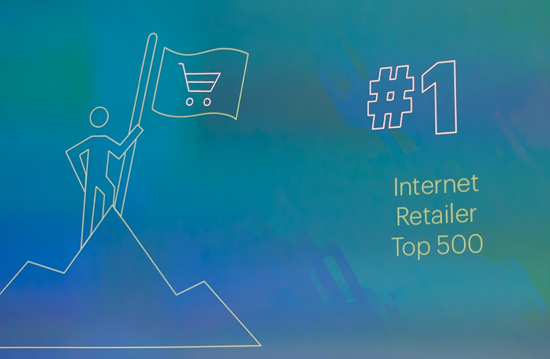
Hayman compared the open source Magento platform to other extremely succesful platforms, including Linux (running most of the Web servers in the world), Java (a dominant programming language), and Android (running a majority of the smart phones in the world).
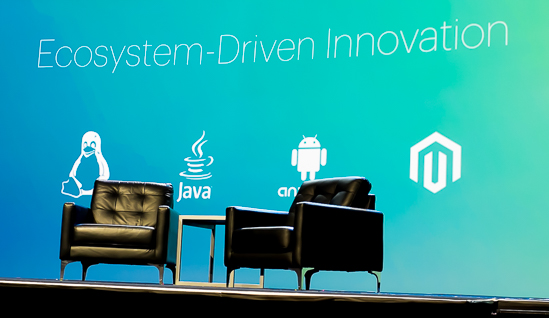
Hayman spoke about traditional retail stores – brick and mortar – struggling in the marketplace
"Is retail dead?" he asked
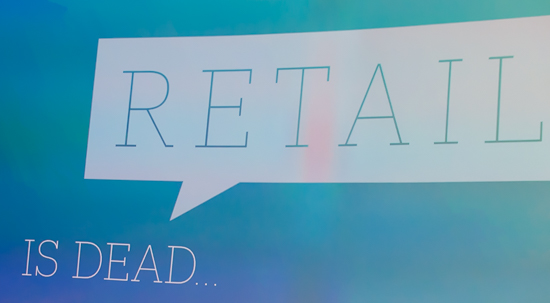
But talked about how some brick and mortar retailers are adapting and making the transition.
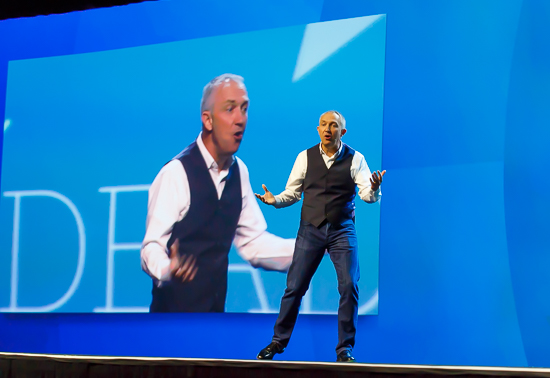
Hayman then brought in an example of a traditional brick and mortar retailer that was trying to make the transition to the online space, Rebecca Minkoff:
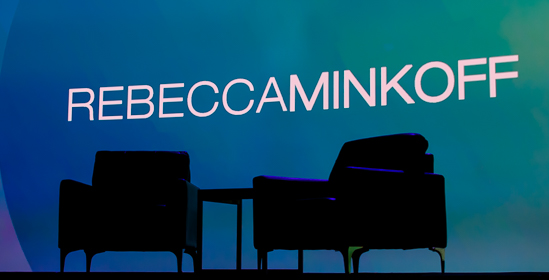
He introduced Emily Culp, the Senior Vice President in charge of eCommerce and Omni-Channel Marketing
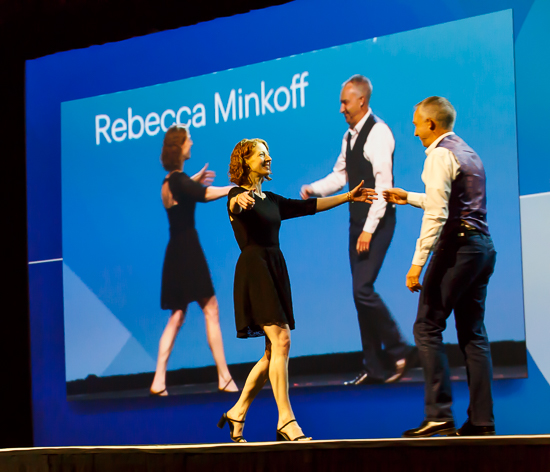
Shy Customers:
Emily discussed that there’s a shy segment of their customer base audience who doesn’t want to talk to people, and wants the self-service option inside the store.
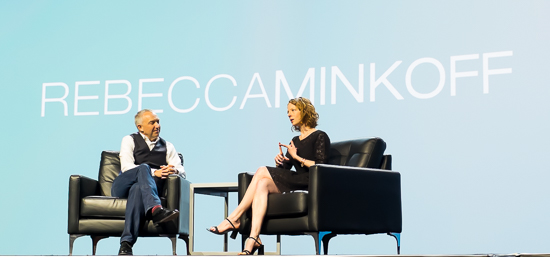
They have a touch screen system in a dressing room where you can order more clothes, different sizes.
They have RFID tags in all products, and you have "save" the exact product and size and have it sent to your phone for later, so you can buy it later.
They built in "filters" for the lighting in their dressing room, including Brooklyn morning, to give the ability for people to see outfits in different lights. Much like Instragram filters.
Other customer segments want full service, and the touch screen system allows them to offer both options easily to customers.
Next, Craig Hayman introduced Fred Argir, the Senior VP and Chief Digital Officer for Toys R Us:
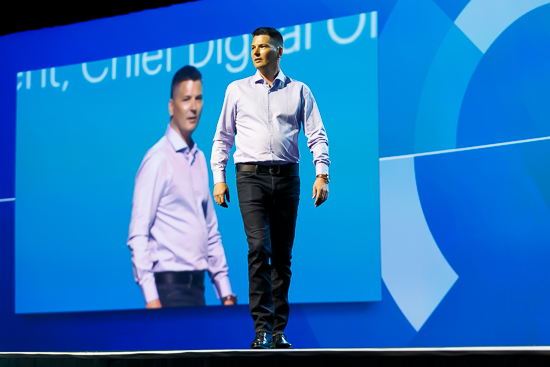
Argir told the group the honest truth about the struggles of big retailers like Toys R Us:
- Customers are telling us what they want; we (Toys R Us) are struggling to listen.
- Toys R Us conducted research that shows that 80% of customers use their mobile devices to research products while inside a retail store.
They are using Magento, but most of their sales are still at brick and mortar.
Next, Shoe Carnival was featured… a really big brick and mortar retailer:
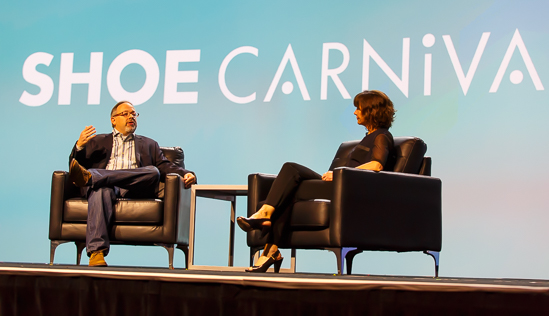
The third Brick and Mortar Retailer to be featured in the opening program was Shoe Carnival, a company with 400 stores across the US
Craig Hayman introduced Kent Zimmerman, the VP of eCommerce for Shoe Carnival:
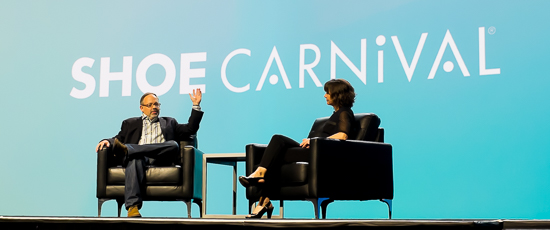
Lisa Butler, the VP of Sales Enablement for eBay Enterprise led the discussion.
The takeaway:
Shoe Carnival did a crazy amount of work to use all of the in-store inventory at their 400 stores for inventory and fulfillment.
(Note: Our Magento Development team at Customer Paradigm did a similar integration in the shoe space for about 75 stores, and it’s very, very complex to do this well and at scale).
This allows them to get their products to their customers much, much faster.
Their next big project is to create allow for in-store pickup. So you can shop online, and then be able to drive to the store to pick it up.
Jamie Clarke – Back as MC for Magento Imagine:
Jamie Clarke, the co-founder of LiveOutdoors.com (a Magento site) was the MC for the event:
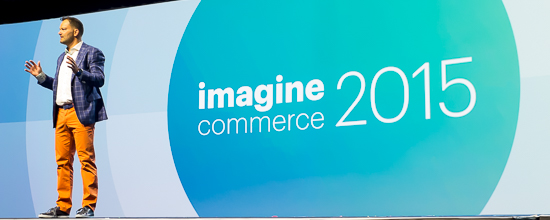
He talked a lot about why he is passionate about the site that he runs… and it’s all about trying to get people to be outside, enjoy nature, and be fit:
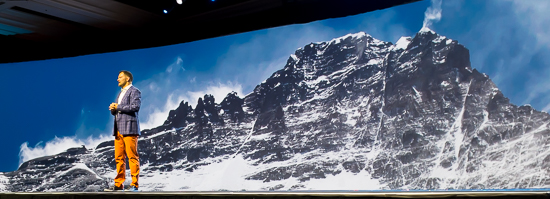
Breakout Session #1: How To End Code Deployment Nightmares
First, let me begin by saying that I did not go to all of the breakout sessions. It’s just not possible… and so I’m featuring the ones that were most relevant and interesting to me.
The first breakout session that I went to was about how to keep the code on a Magento site consistent from the development, staging and production sites.
This is no small task, and is something that we’ve struggled with in the past, too.
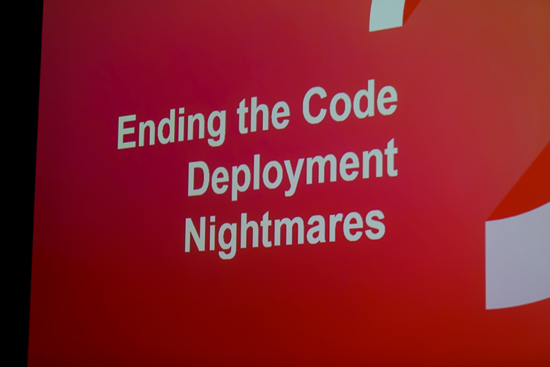
The workshop covered how different systems can introduce artefacts and bugs into the development, staging and production process… especially if you have multiple people working on the system at the same time:
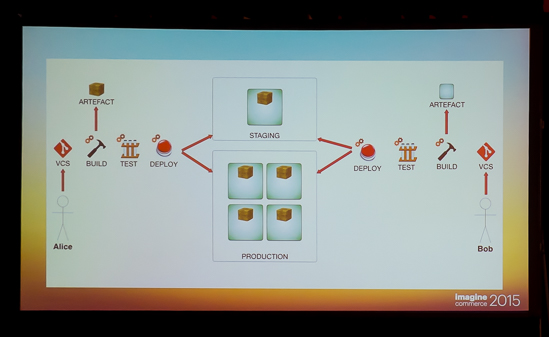
He introduced Alice and Bob, two people who work on a Magento site:
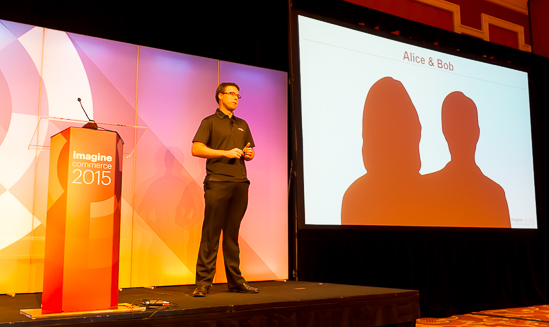
Alice’s problems included the issue that pushing new features and code up to the site is a slow and tediou process.
Some deployments can cause major issues with the site, and old bugs can still crop up… even if everything works 100% on the testing and staging servers.
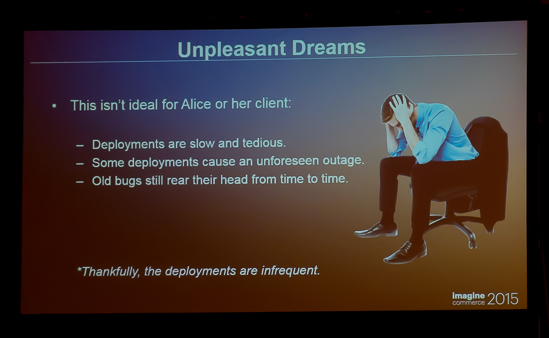
Plus, clients hate downtime on their site – especially if it’s a high-volume eCommerce site.
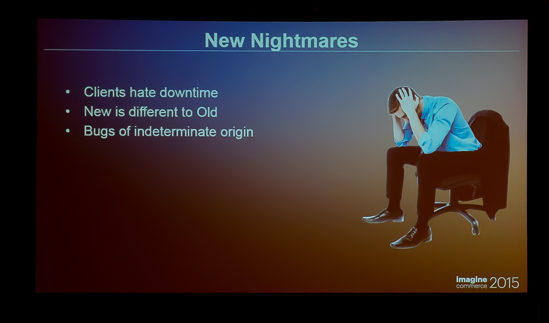
In the past, the problem was that manual deployments (i.e. dragging and dropping each file, one at a time via FTP and making database changes) are a slow process, and can cause errors.
Because they are tedious, they are slow, and if something is missed accidentally, the live production site isn’t an exact replica of the staging site.
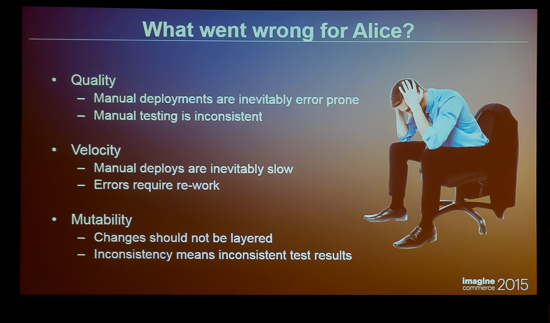
For Alice and the customer, the issue with a lack of a version control system is that if bugs are displayed on the site after deployment of new features, content or systems, the burning question is:
- Were the bugs there before? But now there are more people actually looking at the site and finding the bug, because there are more eyes on it?
- Or, is it a new bug, based on the new deployment.
That’s why it matters.
Breakout Session #2: SEO for Magento
The next breakout sessions was about SEO for Magento.
This is a topic that is near and dear to me, and while much of it was a review, there were a few good incremental takeaways.
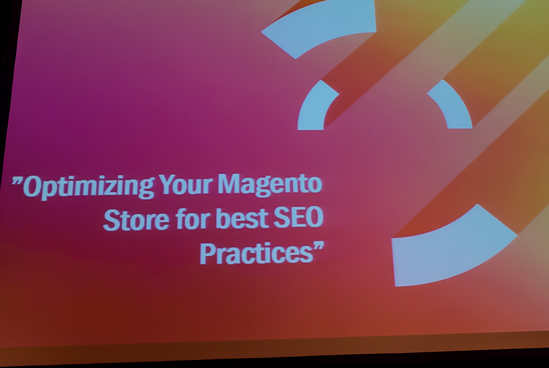
My biggest takeaway is that Mageto store owners should optimize meta descriptions for clickthroughs and add strong calls to action in them
The speaker talked about why they prefer Magento for SEO:
- Magento is the CMS of choice for their client’s search campaigns
- Magento offers a keyword rich URL structure
- Magento is flexible, and offers advanced features
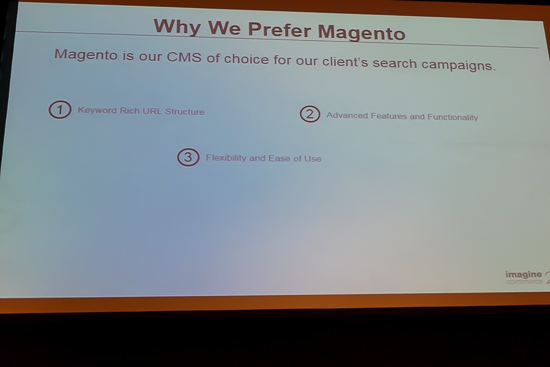
They covered some Magento SEO basics, including:
- Enabling caching
- Site speed improvements
- Allowing guest reviews
- The speaker also recommended redirecting the www. version of the site to the non www. version.
- I think this was meant as a way to maximize the keyword density of the domain name, but this is something that I disagree with for anyone that has had a site that’s ranked well in the past.
- I do agree that it’s best to redirect one of the versions (I think the non-www. version) to the other, so that you don’t have duplicate content.
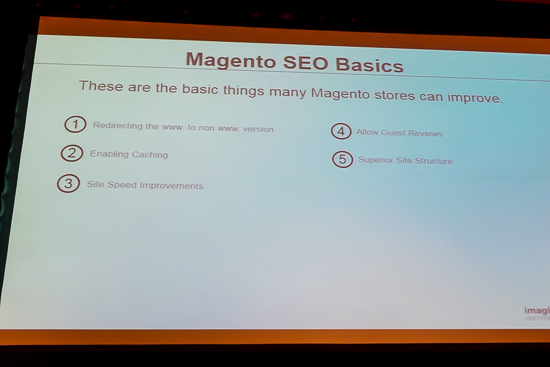
This is something that can be done easily in the Magento admin area, or by more complex DNS or .htacess file rules.
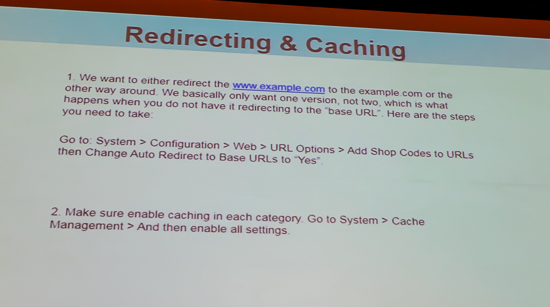
The speaker recommended using many of the free site tools available to help boost site speed.
Caching (both images and HTML) is huge.
Another top recommendation is to update the home page and top areas of a site to use inline CSS, so that these elements load quickly, without having to wait for an external style sheet lookup.
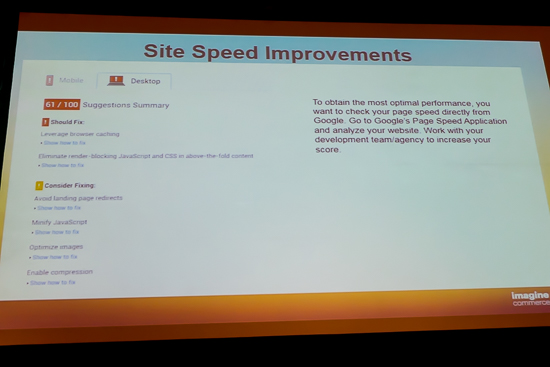
Enabling reviews on the site produces more content and end user trust, and is recommended:
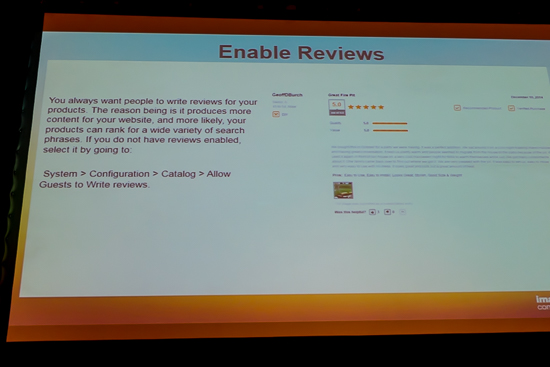
The speaker also recommended that Magento store owners use a good site structure for SEO success.
A good example is something like:
http://www.domain.com/category_name/sub-category_name/product_name
(This allows you to have great, relevant keyword information in your URL structure.)
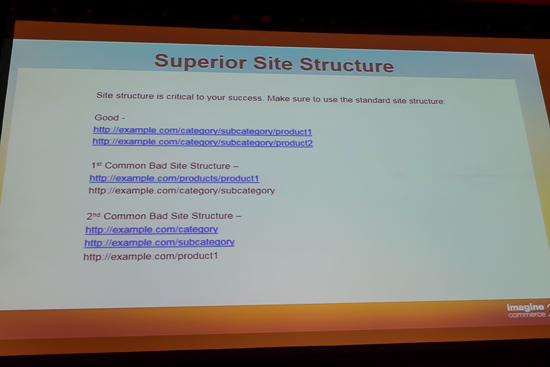
Another recommendation for Magento SEO was for On-Page Optimization, including:
- Doing keyword research and organizing your top keywords in spreadsheets.
- Optimizing titles, meta description and body content.
- Make sure that your backlink profile is clean.
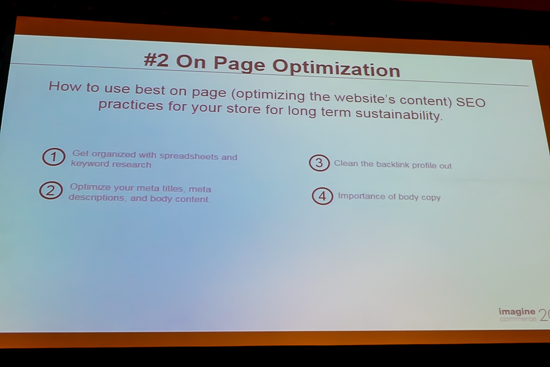
They tend to use Google’s Adwords tool for most of their keyword research, although they sometimes also use SEM Rush’s tool as well
Google Adwords is free…
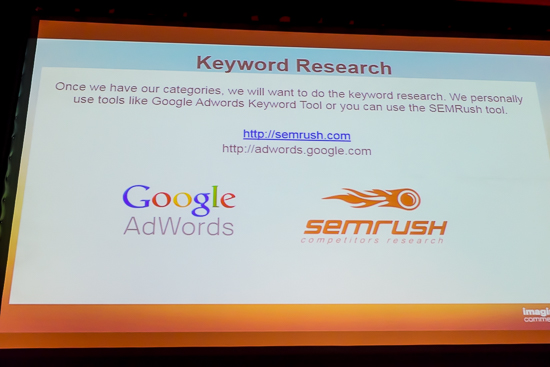
In Google Adwords, the system will allow you to rapidly do keyword research to bolster your Magento store’s SEO campaign:
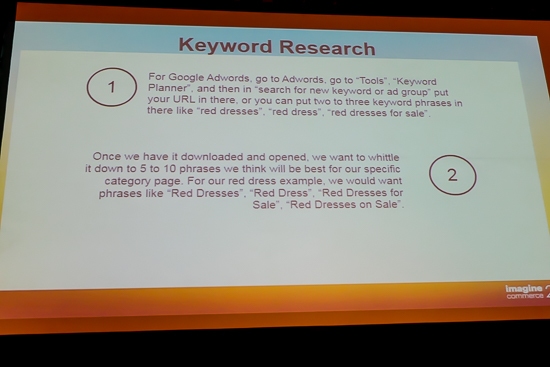
They then take the keywordds, monthly searches, and average CPC (Cost Per Click), and use the Cost Per Click rate to estimate how competitive phase will be to rank for the Magento site:
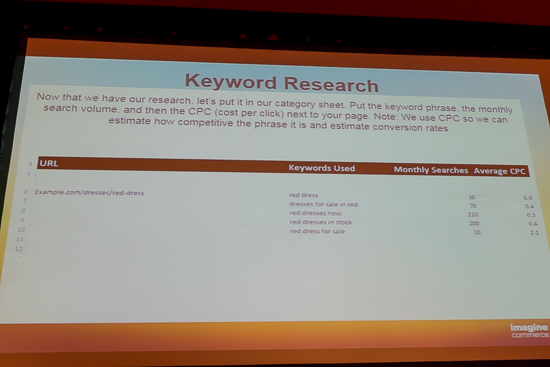
They offered a bit of advice on how to best optimize meta titles for Magento Products or Categories:
Good: The Best Red & Blue Dresses for Sale at My Company
Bad: Red Dress – Blue Dress – The Best for Sale at My Company.
They emphasized that you should optimize title tags for users who are more likely to click on a blue title tag in a Google search and go to a Magento site:
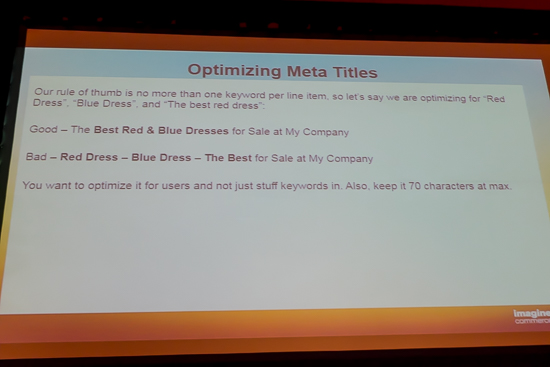
I really liked their emphasis on optimization for Meta Descriptions. I find that many people "forget" or don’t do Meta Descriptions well.
Meta descriptions should offer a strong call to action and should be readable for users.
Good: "The best red and blue dresses for sale at My Company. We offer the best selection from our women’s wear and offer free shipping for orders over $100."
I agree. I’d click on that more the above example (assuming I wanted to purchase a dress online – which I have done for my daughter), vs the bad example:
Bad: "Red Dress and blue dress for sale at My Company. We offer the best red dress you can find on the internet and the best pricing on blue dresses."
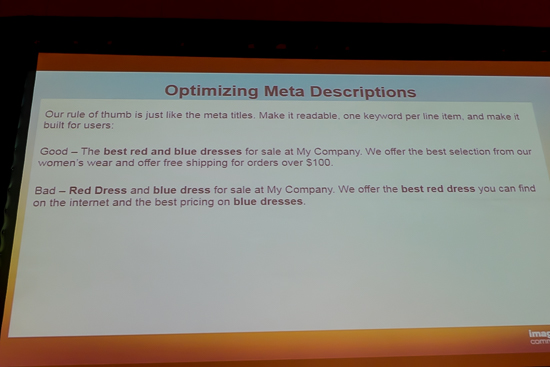
They recommended keeping keyword density to less than 1% on a page, and only one keyword in a title tag or H1.
But… make sure that your keyword is in your first H1 tag on the page:
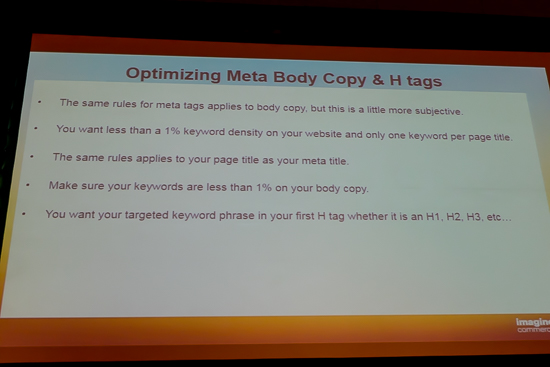
URL optimization tricks for a Magento site:
In the post-Panda 2.0 Google world of SEO, sometimes shorter URLs work better than longer ones.
OLD link: www.example.com/how-to-quit-eating-apples/
NEW link: www.example.com/quit-eating-apples/
The shorter link increased traffic to the page by 100% in 5 months.
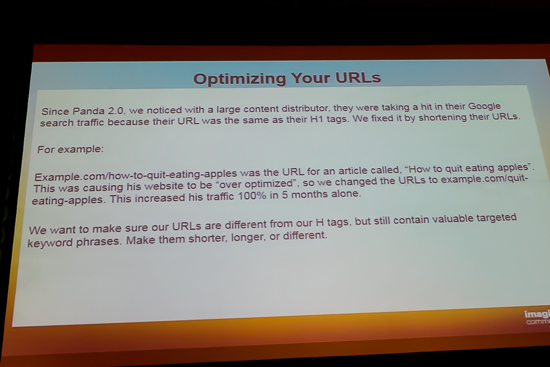
From an SEO perspective, it’s important to not have spammy sites linking to you, and use the disavow tool to remove them if they aren’t quality links
I do recommend being extremely careful about this, though.
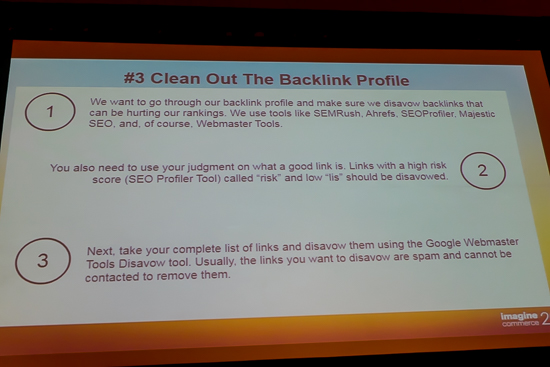
Copy is King! 300 words of copy on a category page helped one page jump from not in the top 100 search results to a second page listing
Copy matters
My opinion: Google is made up of a lot of engineers who really want to understand all about a product. They are the ones making ranking decisions. And they like copy and content.
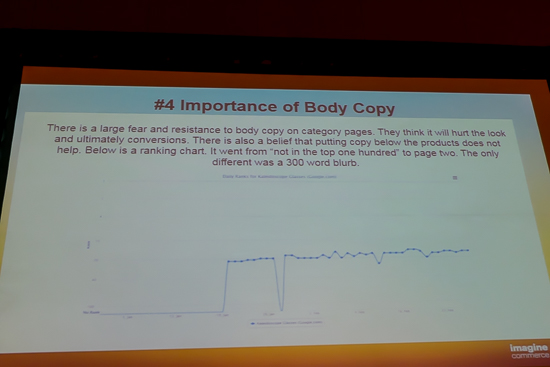
Off Page Optimization for a Magento Site:
They also talked about four ways to better build links and authority off of the site, including:
1. Power Page guest blogging. (I’d worry about this in some cases, though)
2. Social Signals, such as Facebook likes, Google+ posts, Tweets, Instagram and more.
3. Building content on your own site using reviews for products.
4. Forum posting, blog comments and social bookmarking
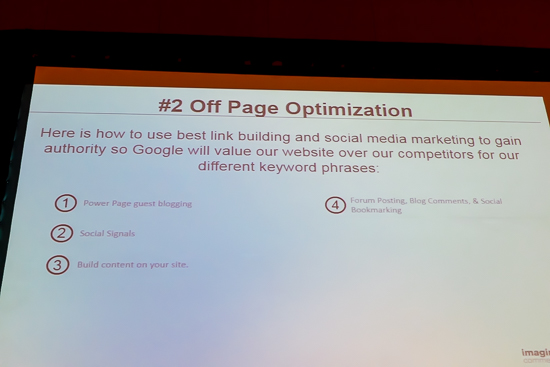
They covered a notion of Power Page guest blogging, and define Power Pages as gigantic or awesome pieces of content for a site.
I tend to agree – people are hungry for long-form content – especially if they are going to be making a big purchasing decision (i.e. an expensive item on a Magento commerce site):
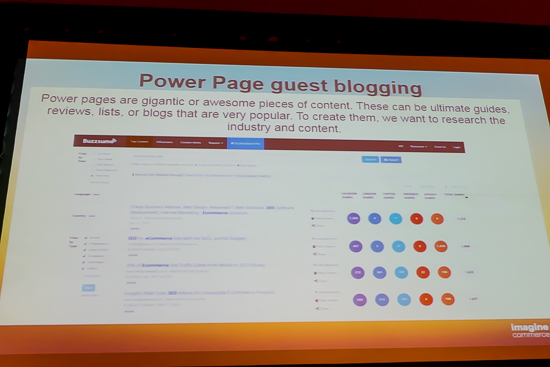
For content, they recommended:
1. Quality over quantity.
2. Tier your link building via social media; this creates a more natural link profile. A tiered link structure looks something like this:
- Main link to your site from an article.
- Links to article from social media (Twitter, Facebook, Google+)
- Other people re-posting social media posts that link to your posts
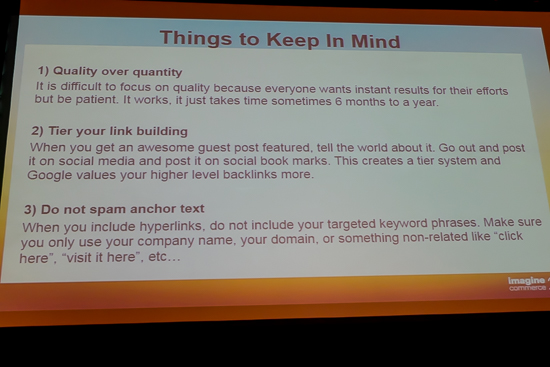
Keynote Session: Steve Wynn
Steve Wynn, a billionare entrepreneur who built successful casinos was a featured keynote speaker at the Magento Imagine conference:
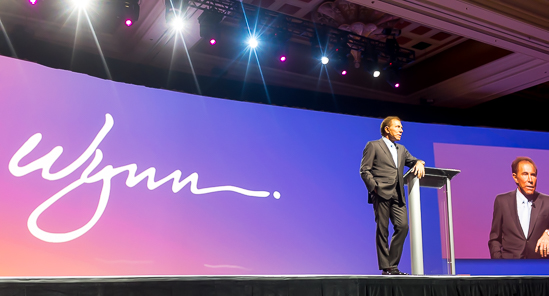
He was led up to the podium by his wife, who I think was worried that he might fall off the stage.
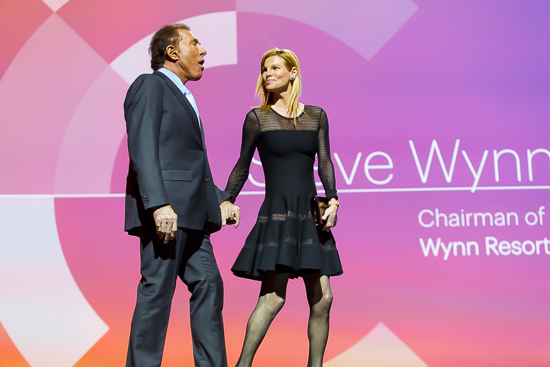
Steve Wynn is not very technical, by his own admission.
But what he said he was really good at was creating an amazing customer experience for guests.
(Which is what we try to do online with Website design and interactive marketing.)
Wynn’s guiding principle for his business is:
"A single person, with a single interaction with a customer, can change the course of the enterprise."
What Wynn means by this is that every single day, a small interaction can make the company extremely successful
Unlike most companies, they have figured out how to celebrate these successes, look for them, and make employees feel great in the process.

Wynn told an inspiring story about a bellman who brought an older couple’s bags up to their room.
Wynn described how they have the bellman take the bags in the same elevator as the guests, so that they’re not separated from their bags. He said it’s the old-fashioned way that bellman used to take luggage to rooms, and they’re one of the last organzations that still does it that way.
After showing the couple some of the features of the room (for example, how to open and close the window coverings via a remote control), the bellman asked the guests to make sure that all of their bags were there.
The wife then suddenly realized that she had left their bag of medicine, including the husband’s insulin, on the kitchen table at their home in Encino, California.
The bellman overheard this, and the high amount of distress, and asked when they next needed the medicine (the husband didn’t need it until the next morning at breakfast).
The bellman told the couple, don’t worry – I’ll take care of you and you’ll have the insulin in time for breakfast.
The bellman then asked his brother in Encino to go pick up their medicine at their house (the couple’s housekeeper let him in after a quick call from the guests).
The bellman next went to his manager, told him what was happening, and asked for the rest of the day off.
The bellman then drove from Las Vegas to Encino, grabbed the bag from his brother, brought it back to Las Vegas, and had it there in time for breakfast. (I did a check, and the drive between Las Vegas and Encino, CA takes 4.5 hours each way, for a total roundtrip of 568 miles.)
Rather than force the couple to go to the hospital and take many hours away from their vacation, the bellman took quick action and helped create an amazing customer experience.
But according to Wynn, this isn’t a story that is an anomoly. It’s something that they have happen 50-80 times per week.
Again, Wynn’s philosophy and guiding principle is that "A single person, with a single interaction with a customer, can change the course of the enterprise."
What the Wynn Resort did next was celebrate this success
Every morning, all of the teams have morning meetings. And one of the questions that the team leader / boss asks is do you have any customer stories.
In this case, the bellman told his group of peers the story. His boss rewarded him and told him he did an amazing job. The rest of the team saw the praise, and the social status that he got as a result, and then became more likely to help out guests in the future. This is the culture of the organization: you get peer respect, and higher self esteem, by helping out customers in their time of need.
Next, the boss rewarded the bellman by calling up for an in-company reporter and photographer. The bellman’s story was featured in their weekly internal newsletter, and a big poster of him and the story was plastered on the wall in the employee’s lounge.
This was rewarded, photographed, celebrated in morning stand up meeting. His boss tells all the others, wow, amazing job. All of his peers then see that this is the way to get respect, to get ahead. Focusing on the customer.
According to Wynn, at a certain point, people work not for money, but for self-esteem. To feel good. And Wynn continued that "when something goes wrong, it allows us to distinguish ourselves."
And he feels that a great guest experience can translate directly into higher morale.
He mentioned to Craig Hayman, the president of eBay Enterprise, and the person who brought him up onto the stage that, "the most destructive way to damage employee morale is through layoffs."
He told Hayman, "You should never do layoffs." And then as Hayman turned a bright shade of red, he said, "You did layoffs?"
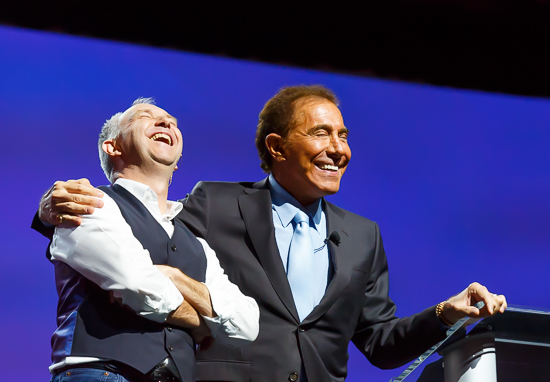
Another guiding principle of Steve Wynn revolves around leadership.
Wynn defines leadership as "a way to getting ordinary people to perform in extraordinary ways to achieve a goal."
Punishment vs. reward.
Wynn was a dolphin trainer for a while. He loved working with the animals
But according to Wynn, you can’t hit them or punish them, because they can literally eat you. Same thing with an elephant. Instead, he likes to focus mostly on positive reinforcement.
Wynn’s advice to all of the Magento partners and developers in the audience: you must convince the end user that they are really smart by going with you as a choice.
Reward the customer for being smart for hiring us (i.e. as a Magento Solutions provider) or shopping with us (on a Magento site).
Wynn says, "I try to think like a customer. I try to walk in their shoes."
Focus on what makes you (or the customer) feel good.
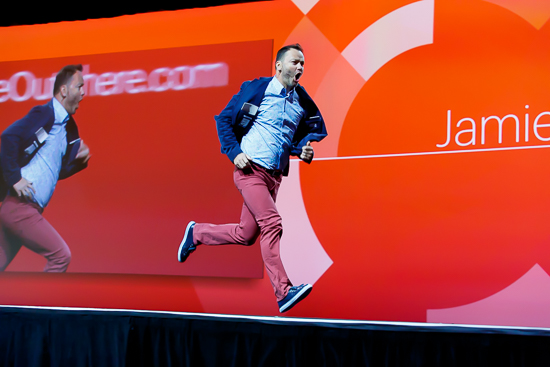
Wednesday Morning Session: Mark Lavelle:
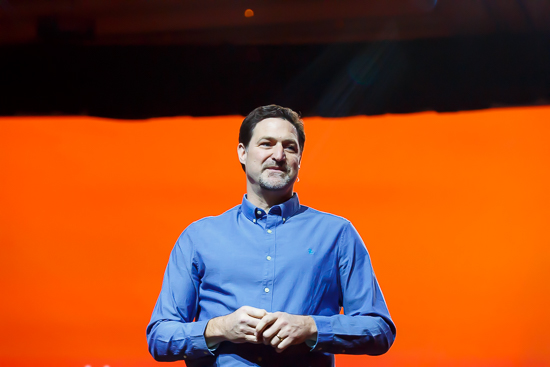
Mark Lavelle, the Senior Vice President and General Manager of eBay Enterprise started things offf on Wednesday morning, and discussed Magento 2.0, as well as the overall Magento ecosystem.
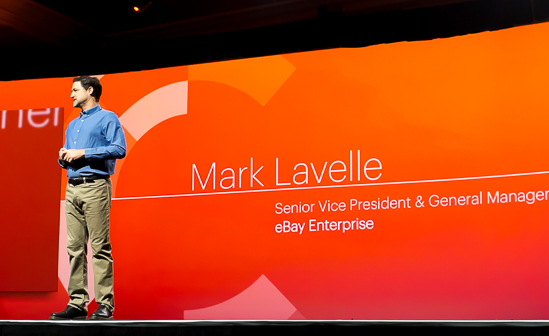
Mark Lavelle, the Senior Vice President and General Manager of eBay Enterprise started things offf on Wednesday morning, and discussed Magento 2.0, as well as the overall Magento ecosystem. (More on Magento 2.0 here >>)
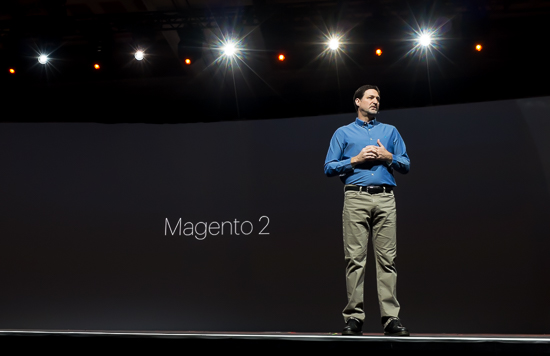
According to Lavelle, there are 240,000+ customers using Magento commerce storefronts.
With 300+ partners, there are 4,500+ Magento certified developers worldwide.
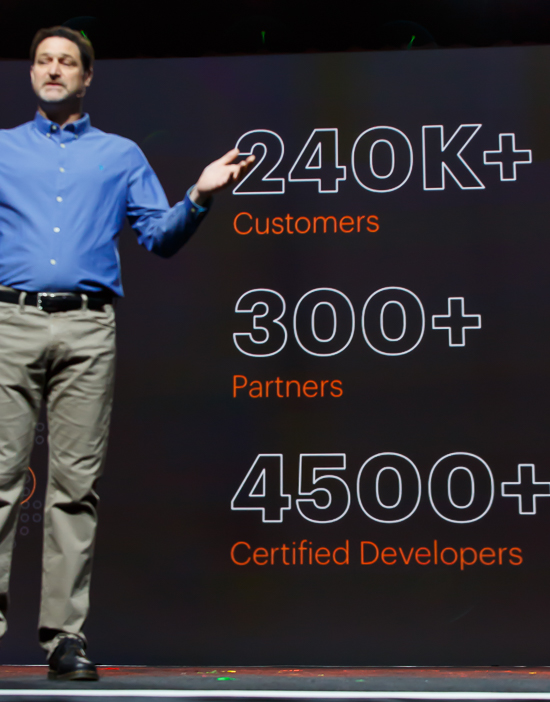
He said that Magento is largest eCommerce ecosystem in the world – by far. And Magento is past the inflection point when it comes to adoption.
What does the future hold? A world of always-connected devices. Global consumers, major marketplaces, and consumers who want instant gratification with fast shipping.
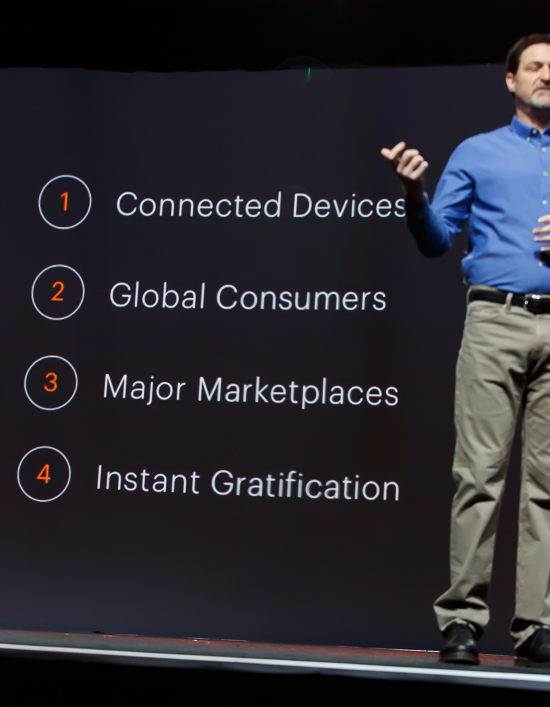
The world of the Web is moving from the demand side of the equation, with Web, Mobile, Retail Stores, Customer Service and the Marketplace… into the supply side of the equation.
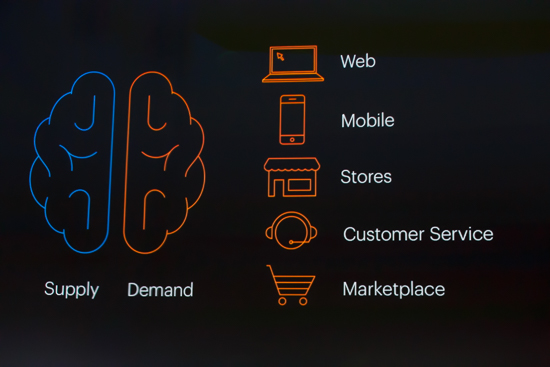
Lavelle feels that the supply side is where a lot more emphasis is being placed now – fulfilling orders quickly and easily.
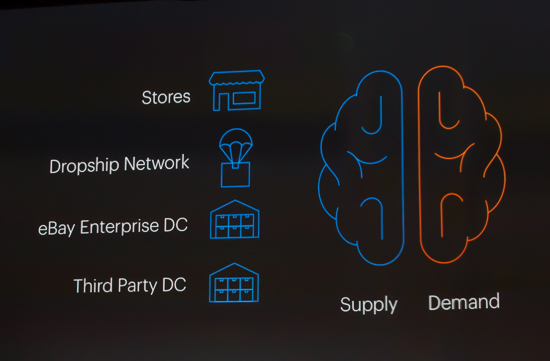
Magento continues to be featured as the top solution in the Internet Retailer Top 500 listing for eCommerce software, as well as leading the charge for the Hot 100 2014 Best Retail Websites.
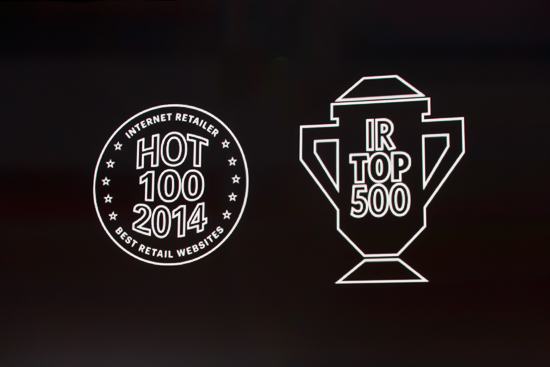
Forrester Research also found that from 2012 to 2015, Magento has moved from a "Contender" in the eCommerce space to a market "Leader."
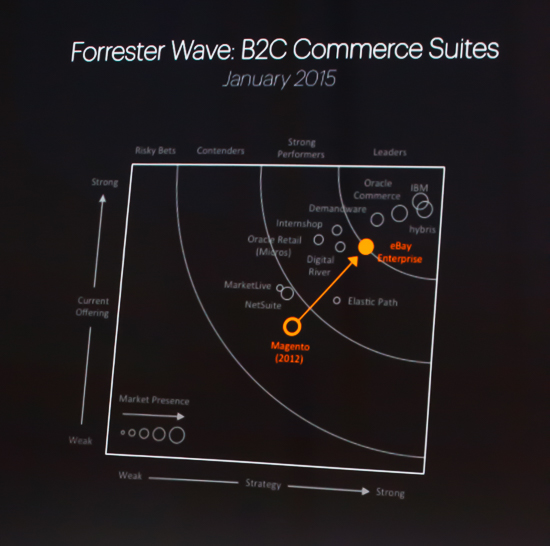
Magento has moved from what Gartner felt was a "niche" player in the eCommerce world to a strong challenger. The only contenders Garnter felt were stronger leaders were Oracle, IBM and SAP – who have been in the business world for a lot longer than Magento’s short run.
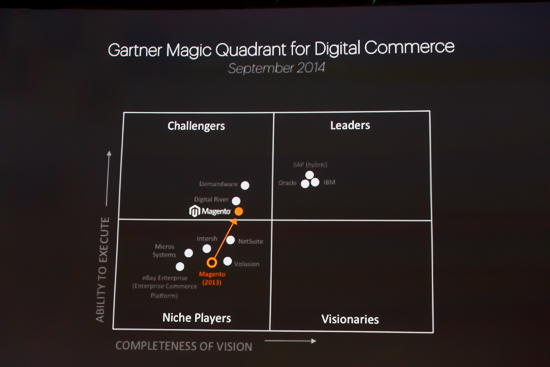
Lavelle continued, and started to delve into more trends…

Lavelle’s final thoughts at the conference:
- Amazon is still the big monster, especially with Amazon Prime:
- Delivery of product has set customer expectation now for free two day shipping. One day at a slight price. And in some select areas – within an hour or two.
- This expectation of fast, free shipping puts a lot of pressure on Magento store owners to use logistics companies that can match the expectation (or at least come close).
- Anticipating Commerce:
- Happening already: some companies are anticipating commerce and shipping things before you know you need it.
- With free returns, this is a trend that might take off.
- Omni-channel changes:
- The new challenge is knowing your customer, regardless of the channel.
- It’s not easy to know where your inventory is
- And it’s not easy to know how to best get your products to your customers as fast as possible.
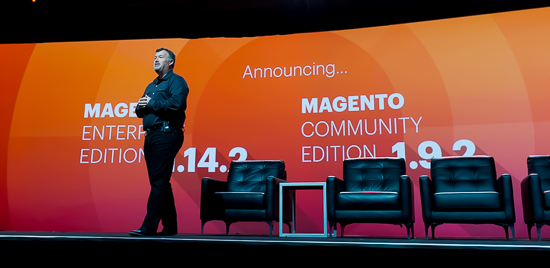
Finally, Magento announced:
- Magento Enterprise 1.14.2.0
- Magento Community 1.9.2.0
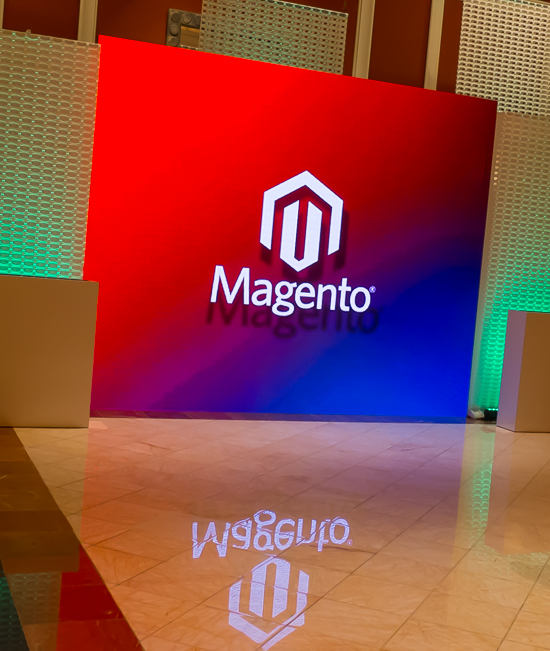
Magento Enterprise 1.14.2.0 offers:
- Visual merchandising / sorting rules
- Tag management
- Automated functions
- Better full page chaching
- Reddis integration
- Zend integration enhancements
- OS Software Development Kit: Create mobile apps easily for iPhones.
- New Relic – new extension
Magento Imagine 2015 closed the same way as it opened – with great music:

Thanks,

Jeff Finkelstein
Founder, Customer Paradigm
303.473.4400
Connect
Via Facebook >>
Connect
Via Google+ >>
Connect
Via Linked In >>
Connect
Via Twitter >>
We
love referrals! Our
Referral Promise >>
|